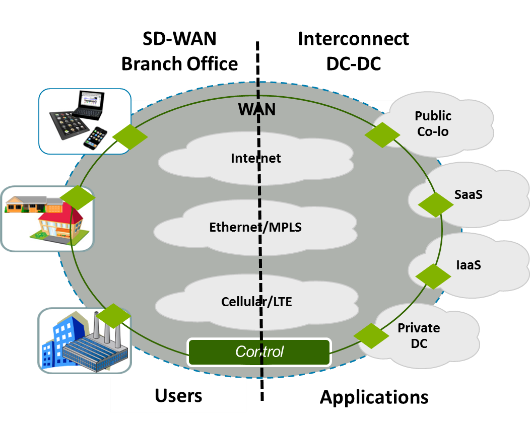2019 is the year that SD-WAN implementations are set to explode. That said, many enterprises are nervous about their SD-WAN vendor selection seeing as this is a new market with a lot of new vendor and products. For many enterprises, a multi-vendor SD-WAN strategy may be the best near-term strategy as this market continues to mature. This will resonate well with enterprises that have a “best of breed” versus a “one vendor for all” strategy.
First, let’s set expectations that every SD-WAN solution is proprietary. Cross-platform interoperability will not occur in the foreseeable future.
ONUG has a lofty goal of creating interoperability at the management and orchestration layer, but even that is a stretch. Cisco’s Meraki, Viptela, and IWAN products, for example, will never be able to directly peer with each other. Fundamentally, each uses a different “label and tunnel” format on every IP packet that is sent. That said, one of the benefits of SD-WAN platforms is simpler management, so supporting a multi-vendor or multi-product strategy is not overly burdensome.
A multi-vendor approach goes against everything that IT is about in trying to simplify the infrastructure. But this is why it makes sense:
- Economics – Large enterprises divide their WAN into five different site models based on number of users and devices at the site as well as its business importance. Economically speaking, putting a pair of expensive routing hardware and software licenses at the smaller tier sites does not make financial sense.
- Speed of Implementation – The economics of SD-WAN for small sites is a slam dunk. Delaying the rollout while trying to get a single enterprise SD-WAN solution does not make financial sense. Plus, some SD-WAN “lite” solutions -- for small sites with few requirements over and above the basics -- allow for quick rollouts. Zero Touch Provisioning (ZTP) is the hot buzzword on enabling a quick, low-touch implementation model.
- Different Requirements – The WAN requirements for connecting sites with users to data centers and clouds where applications reside is different than inter-connecting data centers and cloud services. Bandwidth, latency, segmentation, WAN optimization, and load balancing requirements are very different in these networks.
The greatest disadvantage of moving to a multi-vendor SD-WAN strategy is continuing with a hub-and-spoke WAN architecture, where all network traffic transits through a data center. While most large enterprise and government networks are designed this way today, the long-term strategy is to move to a peer-to-peer edge network to reduce network latency. Augmented reality and edge computing to support applications such as manufacturing reliability and driverless cars require users and applications to be within 5ms transport of each other.
Most enterprises support many different types of operating systems, databases, and security solutions. Not having a one-size-and-vendor-fit-all solution for network routing in the enterprise WAN will become the new norm, especially as networking moves to all software that can run on commodity and virtualized hardware.
In an ideal software world, if you do not like one SD-WAN vendor or product, just delete the software stack and add the new one, re-using the hardware. This is sort of what Cisco is suggesting for their IWAN customers who invested in new and expensive ISR/ASR routers in going to Viptela.










